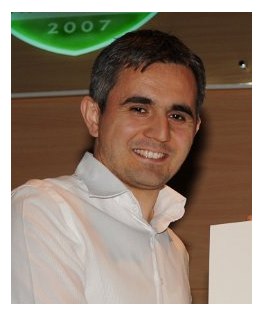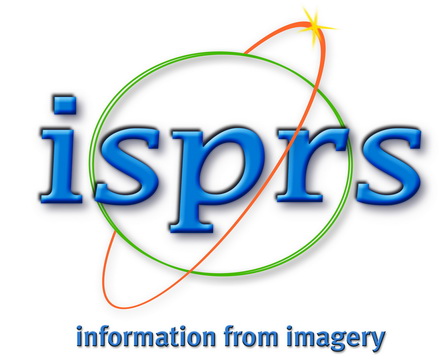Tutorials
This workshop also organizes one day tutorials on 13 October 2017. The summary for each tutorials are as follows. Please note that, the participants should bring their own computers to the Tutorials. To see the registration fee details, please check Registration page.
13 October 2017
08:30 - 10:30 Dr. Ümit Atila; "Network Analyses Applications with Oracle Spatial"
This tutorial will introduce how to use Oracle Spatial Database to create 3D Spatial Networks and perform 3D Network Analysis within a Network Model. Firstly, the tutorial focuses on SDO_GEOMETRY data type which is used for storing and modeling different types of spatial information in Oracle. This part includes explaining structure of SDO_GEOMETRY, constructing simple geometries such as points, lines and polygons. In the second part, Network Model of Oracle Spatial will be discussed and sample applications will be demonstrated written in Java programming language. This section will elaborate concepts of Network Model such as network tables, defining networks, analyzing and managing networks using Java API. In the final section, a 3D GIS application that uses Oracle Spatial database to store and perform network analysis on a building network will be introduced. This application can perform several types of network analysis with applied constraints on the network and will provide a well understanding of how Oracle Spatial can be used for GIS applications.
Prerequisite: Participants are expected to have some basic Programming experience and SQL database knowledge.
Lecture Notes: tutorial.pdf
10:30 - 10:45
Coffee Break
10:45 - 12:45 Dr. Yasin
Ortakci; "Android Apps with Google Maps API"
This tutorial will introduce Google Map API for Android applications that provides featured map and some implementaions on this map such as adding markers on the map, changing map sytle, defining current position of the user, putting point of interest on the map along with their corresponding icons. Additionally, Google Maps Direction API and Distance Matrix API will be used respectively to help people find their way and to calculate distance and duration between multiple destinations. Some sample Android apps will be developed during this tutorial.
Prerequisite: Participants are expected to have some basic Android application development infrastructure such as being capable of developing a simple Android application. And also participants must install the Android Studio their own computers before attending the tutorials. Here is the link to download Android Studio: https://developer.android.com/studio/index.html
Lecture Notes: Google Map Tutorial.rar
13:00 - 14:00
Lunch
14:00 - 16:00 Idris
Kahraman; "Photo-Realistic Modelling of Buildings
and Integration with GoogleEarth"
This tutorial will introduce 3D modeling with SketchUp and texturing that reflects realistic view of real structures. Additionally texturing techniques will be applied to 3D plain models with images taken as photo shots. Also some textruring methods will be shown. While aerial photographs are used for roof texture, facades are also made with photographs taken by the cameras for the texture. Additional exposure settings and removing disturbing objects are required such as tree, moving cars, pedestrians, flags and power cables, shadows, flying birds, etc. A plugin converts to citygml format will be described and implemented on models. After modeling structures wthout ant mistakes will be added to Google 3D Warehuse and Google Earth.
Prerequisite: Participants are expected to have essential tips and tricks to create their own models in SketchUp with realistic view. And also participants must install the SketchUp to their own computers before attending the tutorials. Here is the links to install: https://www.sketchup.com/download
16:00 - 16:30 Coffee
Break
16:30 - 18:30 Dr. Kasim Ozacar; "Creating Interactive and Stereoscopic 3D Building Models for Virtual Reality using Unity3D"
Creating interactive 3D models for immersive Virtual Reality (VR) environments provides us flexible viewing experience, and allow us to observe and modify realistic structures effortlessly. Moreover, thanks to a community of a million-designer contributing a million models, we can have a chance to share and discover these 3D contents in Virtual reality environments in such a way that we experience it as if we were really there. In this tutorial, therefore, I aim to use a free game engine, unity 3D, to make the 3D models totally interactive, and export the contents to HTC Vive VR glasses for fully immersive viewing experience.
Prerequisite: Participants are expected to have essential tips and tricks to create their own interactive 3D environments with Unity 3D game engine. And also participants must install the Unity3d ve SweetHome3D their own computers before attending the tutorials. Here is the links to install: Unity3d and SweetHome3D
18:45 - Dr. Behnam Alizadehashrafi; "Tutorial on 3D modeling via AgisoftPhotoscan Application "
Agisoft PhotoScan is an advanced image-based 3D modeling solution aimed at creating professional quality 3D content from still images. Based on the latest multi-view 3D reconstruction technology, it operates with arbitrary images and is efficient in both controlled and uncontrolled conditions. Photos can be taken from any position, providing that the object to be reconstructed is visible on at least two photos. Both image alignment and 3D model reconstruction are fully automated.
The link for downloading application http://p30download.com/fa/entry/66883/
The link for downloading tutorial http://www.agisoft.com/pdf/photoscan-pro_1_2_en.pdf






